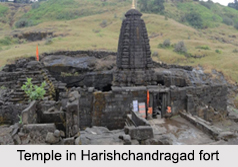 Malshej Ghat is a beautiful hill station with the numerous lakes, waterfalls and mountains. Malshej Ghat is popular among hikers, trekkers and nature lovers. This place is especially beautiful during monsoons. The site is home to hundreds of different kinds of flora and fauna especially the avian population such as rail quails, crakes, flamingos and cuckoos.
Malshej Ghat is a beautiful hill station with the numerous lakes, waterfalls and mountains. Malshej Ghat is popular among hikers, trekkers and nature lovers. This place is especially beautiful during monsoons. The site is home to hundreds of different kinds of flora and fauna especially the avian population such as rail quails, crakes, flamingos and cuckoos.
Location of Malshej Ghat
Malshej Ghat is a mountain pass located in the regions of Western Ghats in Pune district of Indian state of Maharashtra. It is situated at a distance of 130 kilometres north of Pune and 154 kilometres from Mumbai towards northeast.
Things to do in Malshej Ghat
 Malshej Ghat presents many things to do which will captivate and keep people busy. For Hikers and Trekkers, it is a heaven as solitude of unending rolling hills provides quite a fun filled experience. The trekkers can explore the intricate jungle paths below. The place, which is also the birthplace of Shivaji, is covered with dense fog. It is devoid of the mad rush of tourists that normally accompanies most other locations near the city. Malshej Ghat has a peculiarity of being a graveyard for small birds during the onset of the monsoons. As numerous birds are attracted to the bright light of the passing vehicle, the birds hit the cliff faces which very often lead to their deaths. However, this phenomenon has decreased in the recent years according to local naturalists.
Malshej Ghat presents many things to do which will captivate and keep people busy. For Hikers and Trekkers, it is a heaven as solitude of unending rolling hills provides quite a fun filled experience. The trekkers can explore the intricate jungle paths below. The place, which is also the birthplace of Shivaji, is covered with dense fog. It is devoid of the mad rush of tourists that normally accompanies most other locations near the city. Malshej Ghat has a peculiarity of being a graveyard for small birds during the onset of the monsoons. As numerous birds are attracted to the bright light of the passing vehicle, the birds hit the cliff faces which very often lead to their deaths. However, this phenomenon has decreased in the recent years according to local naturalists.
Harishchandragad fort is a fort in this region and is very popular among the trekkers. The temples in this area dated back to 16th century AD and are huge examples of architectural wonder. Malshej falls, the beautiful Pimpalgaon dam and Ajoba Hill fort are some of other attractions of Malshej Ghat.
Visiting information of Malshej Ghat
The nearby railhead is Kalyan in Thane District or Karjat near Mumbai. From Kalyan Rail Station, one can take state buses that travel regularly between Kalyan and Ahmednagar. State Bus Station is right next to the railway station. Any Ahmednagar bus will stop at Malshej Ghat. To reach Malshej ghat by road from Pune, one can take Pune-Nashik highway to Alephata and turn left on Kalyan-Ahmednagar Highway towards Kalyan. From Mumbai, one can take NH3 to Bhiwandi and turn towards Murbad or take state highway through Kalyan, Murbad, Saralgaon and Vaishakhare.



















